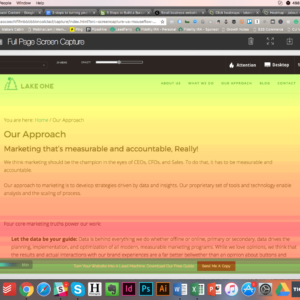Online marketing, advertising and sales are growing so quickly they’re threatening the established media, making it reassess its approaches and fight for its life. “Digital engagement” offers new possibilities, but taking advantage of them “requires a twist to the entire corporate mindset.”
Digital engagement works best in these areas:
- Building your brand – Your Web site is your primary tool for building your brand online. Make it well-designed, interactive, appropriate and up-to-date so it can work with your print ads to bolster brand loyalty, especially in younger buyers.
- Creating leads – Use e-mail to reach Web users. You can spam or use more palatable methods, like “search marketing,” “affiliate marketing” and link swapping.
- Selling – More people are buying online. Selling on the Web is especially useful when you have limited time, or where technology allows you to offer a service – such as travel planning – electronically, and pay less for labor and expertise.
- Offering customer support – Putting part of your customer service operation online saves money. Often, combining phone and online text-based help works well. Properly handled, customer support can enhance brand building and market research, since you can solicit opinions on what your company should do. Responsiveness is crucial; customers who once were willing to wait a few days for an answer now expect one in 24 hours.
- Conducting market research – Use online surveys and feedback forms to solicit consumers’ opinions cheaply and directly. Track how people discuss your brand online or data mine your sales figures to detect your customers’ buying patterns.
- “Generating buzz” – The Internet is a great place to create word-of-mouth publicity. Social networking sites make it easy to chat online about your products.
- Publishing – The emergence of online publishing has hurt traditional content providers. Newspapers and magazines have been relatively slow to adapt. A host of new models, from Web sites to movies to e-books sold (and paid for) through electronic funds transfers, has made the Internet a lively media battleground. The best way to earn revenue online is not yet clear, but many sites sell ads to accompany free content.
Everything you do online starts with your Web site. Keep it up-to-date. If it is more than a year old, it may need a “makeover.” To modernize your site, prioritize site design and renewal. Innovative tools let you track your site’s performance and offer more choices.
New venues, like smartphones, place fresh demands on your designers. Choose your design well so you can build in strong visuals and facilitate programming. Integrate your visuals across platforms: If you have a Web site and a blog, use linked color schemes.
Preview your site to be sure it works on all screen sizes, down to cellphone size. Give your users options; for example, let them choose between Flash and non-Flash designs. Build shortcuts into your design. Use media, from photos to how-to videos, to help users select products. “Embed trustworthiness” in your site by using Verisign or eTrust (and show their logos). Adjust your tone away from the hard sell and toward friendliness.
Automate whatever functions you can and track how well your site works. Your domain name is an essential part of your Web presence. To make your site easier for searchers to find, create a domain name that is as useful as possible. Register your company’s name early, along with its common abbreviations or misspellings. Establish an array of “pointer pages” to redirect visitors to your core site. Consider registering domain names for your major executives. Move quickly when you register, since “cybersquatters” sometimes “typosquat” misspellings or poach desirable domain names. Focus on major domains ending with “.org,” “.net,” “.edu” or, especially, “.com.” Other domains may seem secondary and not as trustworthy. International domains are the exception. Adding a country-specific domain to your Web sites can lend them an international flavor. Renew your domains regularly, so you don’t lose your URLs!
Read more on Business 2 Community
(310)







